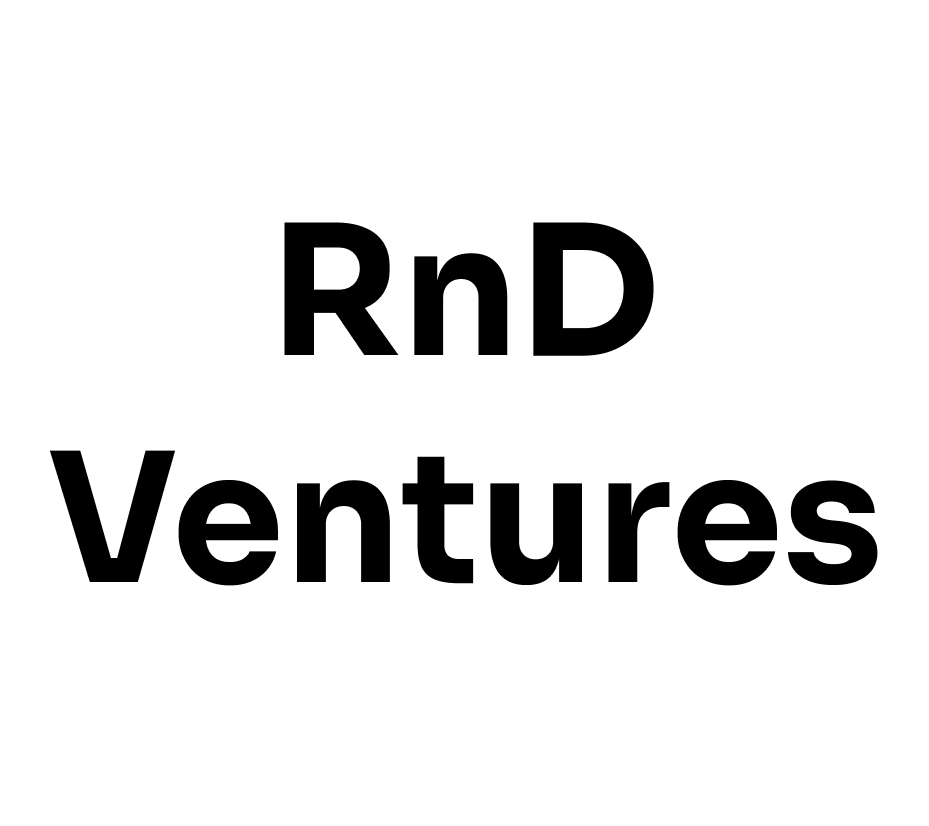RnD Ventures' Approach to Compensation: Sweat Upside - 2025

Empowering builders to move faster and share upside
Building ventures from the ground up is a high-energy, hands-on endeavor—and too often, it’s slowed down by the chase for outside capital. Instead of relying purely on fundraising, we’re taking a fresh approach: letting contributors exchange their time and talent for a genuine stake in the projects they help build. We refer to this concept as Sweat Upside, and it has transformed how we operate in RnD Ventures.
Sweat Upside is for:
- Builders tired of chasing VCs
- Designers, product managers, marketers, and devs who want meaningful ownership
- Startup operators looking for their next big bet
What is Sweat Upside & how does it work
Sweat Upside is based on ideas such as Sweat Equity, systems for calculating sweat equity dynamically like Slicing Pie, and increasingly common practices such as employee stock options. The base concept is simple: the more you invest your labor into a project, the more you own of any future rewards. Imagine co-owning the next Notion or Figma!
Generally speaking, startups are high-risk and high-reward, meaning the majority fail, but those that succeed can succeed big. An example in CollabTech is Wix, where many employees became millionaires after the IPO, exercising a whopping $700 million in stock options.
A committed team is key to maximizing your chances of success. As such, we approach compensation in a way that aligns everyone’s incentives to work hard and focus on the long term. Our compensation system naturally discourages Mercenaries and slackers, while entrepreneurially minded contributors find it exciting.
Importantly, this is not investment advice or a guarantee of returns. Startup contributions carry high risk and can go to 0.
Sweat Equity vs Sweat Upside: the devil lies in the details
The implementation of Sweat Upside can vary from project to project. Some of the most common ones are:
- Distributing equity (aka sweat equity): you’re granted an agreed number of company shares.
- Stock options: often referred to as employee option plans. Contributors get the rights to purchase shares at a pre-agreed price once a certain condition is met, e.g. when the company is sold or IPO. If you’re being given a stock option, make sure you understand how much you have to pay to exercise the option and receive the shares. Many early employees in startups didn’t have the cash at hand and thus were unable to buy the shares of the company when it IPOed, effectively getting 0 for their hard work.
- Tokens: minting utility or governance tokens for contributors to have exposure to the market performance of the project (if the tokens become liquid) or otherwise enabling contributors to use them as utilities or to govern the project. The design of utility and governance tokens can vary significantly from one project to the next.
Make sure to inform yourself about the legal and governance structure of any project before contributing by asking if different stakeholders have the same setup as you. Sometimes, VCs or founders have designed a better arrangement for themselves.
In RnD Ventures Labs, we implement Sweat Upside with governance tokens that confer membership rights in RnDAO LLC - a Marshall Islands DAO LLC where token holders (i.e. members) legally control the LLC and make binding decisions. There are no managing directors. Our LLC is member-managed by the token holders. Then, for day-to-day operations, RnDAO LLC contracts and delegates to different entities that provide services such as venture incubation or community management.
RnDAO LLC owns a portion of each venture in the RnD Ventures ecosystem, being the ultimate beneficiary.
This structure allows us to provide an equal playing field to all our contributors, founders, and investors. Our structure ensures holders have ultimate control and can make operational decisions quickly and effectively.
Each venture in RnD Ventures is a separate entity from RnDAO LLC and thus has its own rules decided by the team. If you’re going to contribute to one of our ventures, make sure to ask about their internal governance.
Calculating Sweat Upside
The amount of Sweat Upside someone receives is based on how much value they invest in the project. If a contributor delivers work but is not compensated or only partially compensated with fiat currency for it, they’re effectively “investing” in the project. As such, they receive Sweat Upside in a similar way that an investor would for contributing capital.
To calculate Sweat Upside, we start by taking the market rate a contributor would get for a similar job We then subtract the amount of cash they are getting paid, and the remainder is their Sweat Upside - the amount they invested in the project.
For example, if your market rate is $4,000 per month, and are getting paid $1,000 in cash, then you’re contributing $3,000 a month towards Sweat Upside.
We use a feedback method where team members evaluate each other. When a contributor’s performance is ranked above or below expectations, their Sweat Upside will increase or decrease proportionally. This mechanism helps us keep the team accountable and align performance and rewards.
The way Sweat Upside can work in practice is as follows: say you joined a venture, and over 12 months you contributed 3,000 * 12 = 36,000 Sweat Upside “points”. While the other team members (including RnD Ventures' venture support team) contributed a combined 74k over that year, and 100k the year before you joined. As such, the total contributed over the lifetime of the projects is 200k Sweat Upside points, and you own 18%. If the team then decides to convert the points into tokens you'd have 18% of the team's share. Let’s say the team’s share is 20% of the total tokens, giving you 3.6% of the total tokens created. If the tokens achieve a total valuation of $200M, your 3.6% share of the tokens would be worth $7.2 million. The above scenario depends on compliance with regulations, and if the startup fails, your Sweat Upside could become worthless. Startups are not for the faint-hearted.
When Sweat Pays Off:
Sweat Upside is controlled and managed by the team, meaning the results depend on what collectively we decide to do. Some options are:
- Ownership: Sweat Upside may convert into tokens or equity at key milestones (e.g. launch, funding rounds).
- Liquidity: Ventures may explore listings, airdrops, buybacks, or secondary equity sales.
- Reality check: Upside is tied to real-world success. No guarantees, no shortcuts.
Minimum viable fiat
We select very entrepreneurial contributors, that is, who are more interested in the long-term upside of the project than in short-term rewards and willing to take chances at building the future. As such, we select contributors who pay themselves the minimum necessary to stay engaged in the project, i.e. who pay themselves the “minimum viable fiat” they need while maximizing the amount of Sweat Upside they get. Using a minimum viable fiat thus enables the project to reduce the chances it will run out of money, extend its runway, and maximize the chances of becoming a success.
Each person’s minimum viable fiat is different. Some have families and kids to support, others live in expensive locations, some have savings that can sustain them for months or even years, and others need to get paid every month to be able to afford rent. As such, we don’t impose a fixed amount of fiat for every contributor. We have a conversation to understand deeply your motivations and needs and ultimately select those most aligned with the needs of the team.
The benefits of Sweat Upside:
- True incentive alignment: our compensation model is deeply tied to the project’s performance.
- Operational efficiency: less time chasing investors for capital to then pay contributors, more time with committed contributors creating value.
- Leveling the playing field: every contributor gets to build and share in the upside.
- Massive capital attraction: sweat upside allows communities to pull their time and skills together to build, reducing reliance on outside investors.
In sum, our Sweat Upside model transforms how projects are built and owned. Instead of chasing capital, talented builders can earn ownership through their contributions, making project success everyone's priority.
Ready to Build?
Whether you code, design, do sales, or research, there's a place for you to build and own what you create. Your skills are the only capital you need.
To get started:
- Read about working in RnD Ventures as a contributor in one of our ventures or as an entrepreneur in residence to start a new venture.
- Join the RnD Ventures Discord and introduce yourself. We’ll invite you to a call and help you find the best place to contribute to our ecosystem.
Disclaimer
This article is for informational purposes only and does not constitute investment advice, legal advice, tax advice, or an offer to sell or solicit any security or token. Participation in our ventures as a contributor is not an offer of employment unless explicitly agreed in writing. Any examples of potential outcomes (financial or otherwise) are illustrative only and not guaranteed. Startups are inherently risky and may result in the total loss of contributed time, value, or capital.
Token or equity allocations, if any, are subject to applicable laws and the specific legal structure of each venture. Contributors are responsible for complying with their local laws, including labor, tax, and securities regulations. RnDAO LLC and affiliated ventures recommend seeking independent legal, financial, and tax advice before participating.
Participation in RnD Ventures implies acceptance of its decentralized governance model. All rights, roles, or benefits are subject to the terms agreed by the relevant venture or DAO entity. Nothing in this article should be interpreted as creating a partnership, agency, or employment relationship unless otherwise specified.
